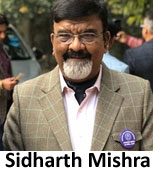The newspapers last fortnight carried headlines of the newly-appointed Lieutenant Governor of Delhi Vinai Kumar Saxena meeting chief minister Arvind Kejriwal, and two agreeing to work together for the benefit of the people. That the occupants of the two offices, mandated to work together, had to declare that they would work together reflects on failed governance in the national Capital in the past nine years.
Bureaucrats holding the office of Lieutenant Governor, staying put in their ivory tower of Raj Niwas, have always found themselves at the receiving end of the competitive politicking. With the new L-G hitting the turf running and giving clear signals that he would not restrict himself to the four-walls of his office, Kejriwal could have quite a challenge at hand.
Beyond the loud proclamation in hoardings and in media, governance in national Capital has declined. The culture to perform and deliver has also been lost. In the times before Kejriwal, the launch of a new Metro line would be followed by Press statements informing what the passenger footfall was and what was the day’s earning.




